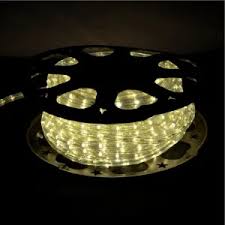When sourcing LED strip light wholesale, verifying product quality is critical to ensure you are getting both effective and reliable lighting solutions. This article provides detailed guidance on assessing the quality of LED strip lights, focusing on key performance indicators, testing methods, and certifications that are vital in identifying high-quality products.
Assess the Physical Build
Check the PCB Quality: The Printed Circuit Board (PCB) is the backbone of an LED strip. High-quality LED strips often use a thick copper PCB (at least 2 ounces per square foot) which ensures better conductivity and heat dissipation. This can be visually inspected or verified through manufacturer specifications.
Inspect LED Density: More LEDs per meter typically translates to better light distribution and fewer dark spots. High-quality strips may have 60 to 120 LEDs per meter, which provides a smoother and more consistent light output.
Examine the Coating: LED strips should have a uniform and durable coating. This coating protects the LEDs and circuitry from dust, moisture, and mechanical damage. Silicone coatings are often superior, offering better protection and heat resistance than epoxy resins.
Evaluate Performance Specifications
Luminous Efficacy: This is a measure of how well a light source produces visible light, expressed as lumens per watt. Higher values (above 100 lumens per watt) indicate more efficient light output.
Color Rendering Index (CRI): High CRI values (above 80, ideally closer to 90) mean the light will render colors more accurately, which is crucial for applications where color differentiation is important, such as retail or art displays.
Color Temperature Consistency: Consistency in color temperature across batches shows manufacturing precision. Discrepancies can lead to uneven lighting in large installations.
Perform Longevity and Reliability Tests
Conduct Burn-in Testing: Running the LED strip continuously for a certain period (typically 24 to 48 hours) can reveal early failures and ensure stability over time.
Thermal Management Testing: Check how the LED strip handles heat over extended periods. Overheating can significantly shorten the lifespan of LED strips.
Check for Dimming Compatibility: Test the dimming capabilities with various controllers to ensure smooth operation without flickering or uneven dimming.
Verify Certifications and Standards
Look for Relevant Certifications: Certifications like UL, CE, and RoHS indicate compliance with international safety and environmental standards. These certifications ensure that the product meets certain regulatory requirements and quality benchmarks.
Manufacturer Warranty: A robust warranty (at least 3 years) reflects the manufacturer's confidence in the durability of their product.
Key Resource for Quality LED Strips
Ensuring the quality of your LED strip lights involves meticulous assessment and testing. For those looking to source high-quality LED strip light wholesale, visiting LED Strip Light Wholesale offers access to premium options that meet rigorous standards.
By thoroughly evaluating these key aspects, businesses can confidently purchase high-quality LED strip lights that will meet their needs and exceed their expectations, ensuring successful lighting projects and satisfied clients.
